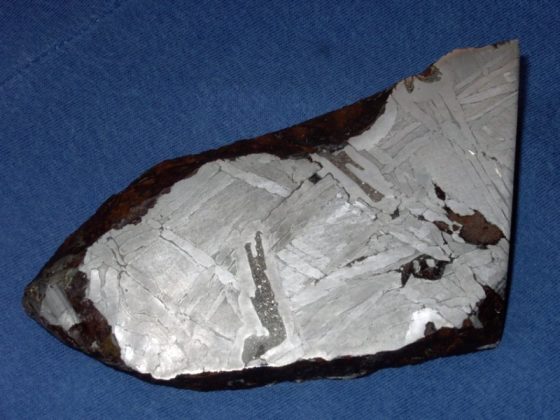Meteorites that crashed onto Earth billions of years ago may have provided the phosphorous essential to the biological systems of terrestrial life.
The meteorites are believed to have contained a phosphorus-bearing mineral called schreibersite, and scientists have recently developed a synthetic version that reacts chemically with organic molecules, showing its potential as a nutrient for life.
Phosphorus is one of life’s most vital components, but often goes unheralded. It helps form the backbone of the long chains of nucleotides that create RNA and DNA; it is part of the phospholipids in cell membranes; and is a building block of the coenzyme used as an energy carrier in cells, adenosine triphosphate (ATP).
Yet the majority of phosphorus on Earth is found in the form of inert phosphates that are insoluble in water and are generally unable to react with organic molecules. This appears at odds with phosphorus’ ubiquity in biochemistry, so how did phosphorus end up being critical to life?
In 2004, Matthew Pasek, an astrobiologist and geochemist from the University of South Florida, developed the idea that schreibersite [(Fe, Ni)3P], which is found in a range of meteorites from chondrites to stony–iron pallasites, could be the original source of life’s phosphorus. Because the phosphorus within schreibersite is a phosphide, which is a compound containing a phosphorus ion bonded to a metal, it behaves in a more reactive fashion than the phosphate typically found on Earth.
Finding naturally-formed schreibersite to use in laboratory experiments can be time consuming when harvesting from newly-fallen meteorites and expensive when buying from private collectors. Instead, it has become easier to produce schreibersite synthetically for use in the laboratory.
Natural schreibersite is an alloy of iron, phosphorous and nickel, but the common form of synthetic schreibersite that has typically been used in experiments is made of just iron and phosphorus, and is easily obtainable as a natural byproduct of iron manufacturing. Previous experiments have indicated it reacts with organics to form chemical bonds with oxygen, the first step towards integrating phosphorous into biological systems.

